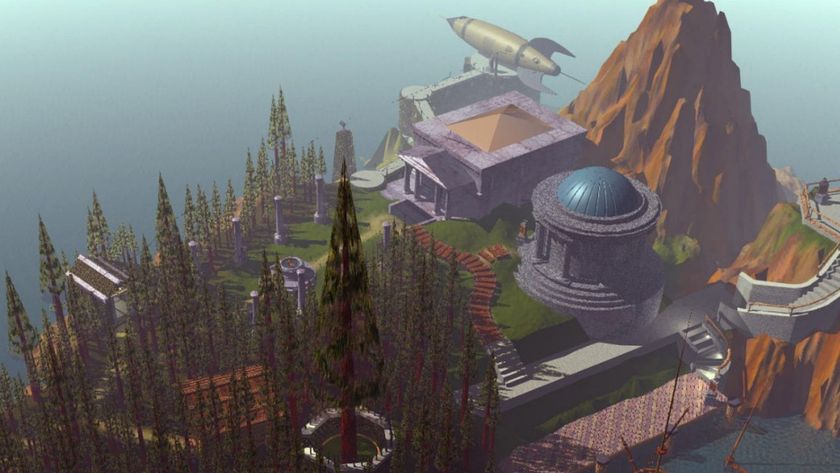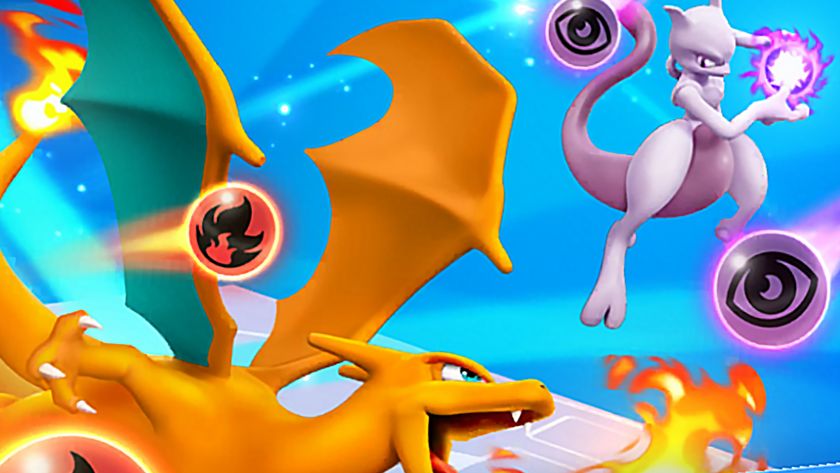Legend of Zelda: Spirit Tracks was a flawed series entry that shined a long-overdue spotlight on its title character
If you're hoping that Zelda gets a more prominent role in Breath of the Wild 2, you really should give this DS gem a try
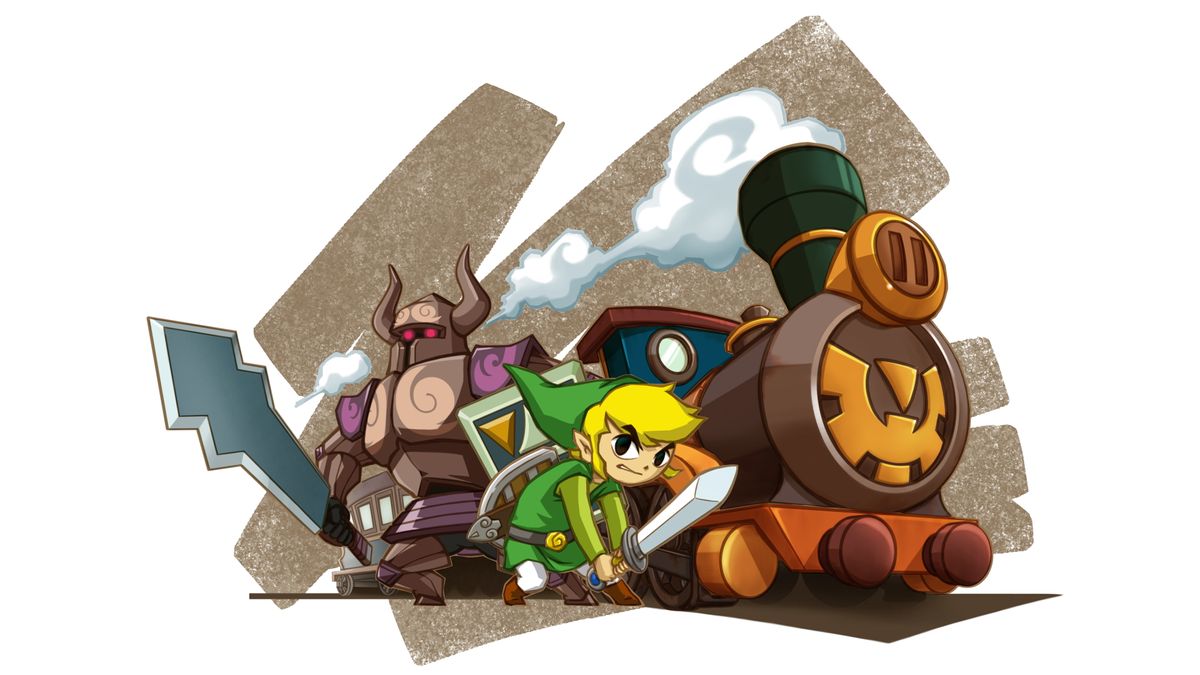
There's probably less anticipation these days for the return of Christ than there is for Nintendo's The Legend of Zelda: Tears of the Kingdom. And for good reason. That game revolutionised not only one of the most celebrated series in videogames but the entire concept of open-world games while it was at it, giving Switch its first Edge 10. It's hard to imagine how any sequel could possibly live up to the hype. But if we can make one request: perhaps Nintendo could include some better characters next time?
That's a little unfair. We'll always have a soft spot for that Zora prince who briefly held the role in the internet's affections that is currently occupied by Lady Dimitrescu. But when compared to other Zelda titles, one of the few areas where Breath Of The Wild doesn't snatch the top spot is its cast. That was somewhat by design, since it was a deliberately (and effectively) isolated adventure.
But as the latest E3 trailer for its sequel leaves players asking once more whether they'll be able to play as Zelda, it's worth studying the DS adventure that first shone a spotlight on the character for whom the entire series is named. Spirit Tracks is a game that gets much wrong, but gets Zelda perfectly right.
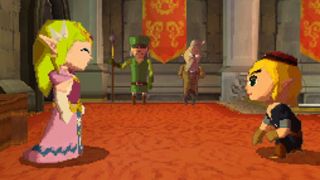
Zelda meets Link during his pompous train-engineer graduation ceremony and immediately undercuts the event by smiling and making an effort to put him at ease. Right away, this is an incarnation of videogames' second most famous princess you can't help liking. Unfortunately she's almost immediately killed off.
Zelda's spirit gets torn from her body so the game's villain can use the latter as a vessel for a demon. On the plus side, this frees up her ghost to join you on the adventure. The game winks at the way she's traditionally behaved in games precisely once – Zelda initially wants to stay behind, explaining: "That's what princesses have always done. From what I understand, it's kind of a family tradition." After that, it's smart enough to never make the joke again.
Once she's on board, both figuratively and literally, it quickly becomes clear that saving her kingdom, not herself, is Zelda's real priority. Even so, as well as being incredibly noble, she's also having fun. Understandably. After waiting so long, Zelda isn't about to let a trifling matter like a lack of pulse get in the way of a good adventure.
Tetra packed
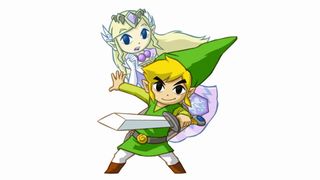
Along with the near quarter-century lineage that Spirit Tracks was working with, it's worth considering the more recent pedigree of the game's Zelda. It begins with Wind Waker's Tetra, a cocky, gung-ho pirate captain who answers to no one. Until she realises that she's Princess Zelda, anyway, and spends the rest of the game in a nice dress doing nothing. In Phantom Hourglass, Tetra is once again a pirate captain – for the duration of an opening cutscene, in which she's promptly kidnapped by a ghost ship and has to be rescued once more.
Sign up to the 12DOVE Newsletter
Weekly digests, tales from the communities you love, and more
Spirit Tracks loses the ships and takes the opportunity to chart a fresh course, giving this incarnation of Princess Zelda more agency than ever. In doing so, it resists the hoary trope that affects many female characters in adventure fiction where the more agency they have, the more their femininity is stripped away, in an attempt to establish their 'badass' credentials.
Zelda, meanwhile isn't above squealing and freezing when rats are on screen – but the developers understand that there's a big difference between being a coward and having a phobia. The latter humanises her, and Zelda shows no fear when fighting the far more terrifying monsters you meet. This Princess Zelda is a protector of her kingdom first, a fun-loving little girl second, and a hero always. If you can't share her clear delight when you discover the rabbit-rescuing sidequest, then you should probably close this browser tab immediately and go back to plotting to destroy Hyrule.
It's certainly refreshing to play a heroic girl who also gets to enjoy being feminine. But not all of the game's most distinctive elements are anywhere near as successful.
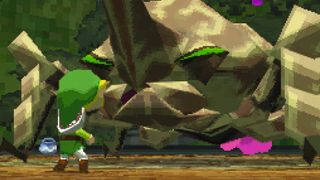
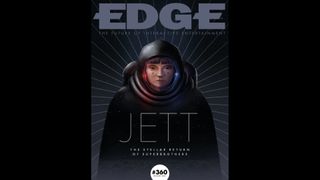
If you want more great long-form games journalism like this every month, delivered straight to your doorstop or your inbox, why not subscribe to Edge here.
Following in the wake of Phantom Hourglass, Spirit Tracks trades the freedom of sailing the ocean for the tedium of train travel on frustratingly pre-set rails. It's an inherently restrictive way to explore and the glorious soundtrack starts to feel more like an apology for the time you spend listening to it while your train chugs along glacially. Cannon combat livens things up slightly, but this is a game in desperate need of speed.
Instead, you get the borderline-sarcastic 'fast' travel system. There are teleportation gates placed along the rails, but each one is connected only to a single corresponding gate. You'll have to make a note on the touchscreen as to which one pairs with which. A fine idea, but the DS hardware doesn't lend itself to clear annotation – there's only so much real estate on that small bottom screen – and gates feel spread out too erratically for teleporting ever to save you a decent chunk of time.
Given how slowly it feels like you're making progress, it's tempting to ignore sidequests involving fussy passengers, who moan at you for going too fast or not defending them from cannon fire. In short, it's hard to imagine a worse transport option than the train.
Off the rails
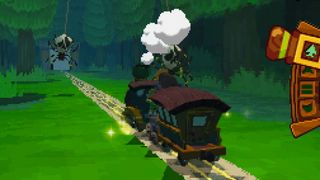
Perhaps unsurprisingly, this wasn't what the developers originally intended. Game director Daiki Iwamoto got the idea from a book he used to read to his son, in which the characters are riding a train and have to lay their own tracks as they travel. They craft solutions whenever the train encounters obstacles, digging a tunnel to get through a mountain, for example, and building a bridge to cross a river. However, you never do anything like this in Spirit Tracks.
A whole year of the game's development was spent trying to figure out how to give the player the freedom to lay tracks anywhere they liked, but without letting them reach areas they mustn't yet for crucial story reasons. It's a problem Breath Of The Wild would later solve by letting you tackle the four main sequences of its story in any order you like. The Spirit Tracks team, though, settled on linear travel and a more traditional structure.
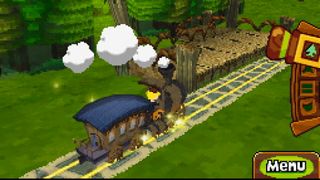
In an attempt to make this compromised approach more fun, bomb trains were introduced. To avoid these grille-faced threats, you have to switch rails, but too often this just makes your dull route to the game's good parts even more circuitous. A late set-piece gives you a power-up that enables you temporarily to hunt your hunters, like Pac-Man after munching on a Power Pellet. You have to say this for it: it really gives you an appreciation for how well Pac-Man is designed. The sharp difficulty spikes and lack of checkpointing combine to make what should be an exciting burst of action as frustrating as chuffing slowly along the rails, as you die over and over.
While the idea of introducing the DS cartridge to some real train tracks can sometimes be tempting, the feeling never lasts long.
Dungeon master
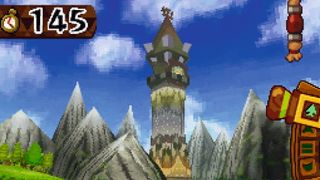
Spirit Tracks simply has too much charm to ever frustrate you for good. Its joyously silly script shifts effortlessly from great gags to moments of pathos without diminishing either. And the core duo are backed up by a strong supporting cast. Villain Chancellor Cole hides the fact he's a demon by wearing two top hats, one over each of his horns. Encountering an ancestor of Hourglass's best character, slimeball sailor Linebeck, we've never been happier to discover selfishness is hereditary.
What really saves Spirit Tracks, though, is another thing Breath Of The Wild lacked: a dungeon that easily ranks among the series' best. With each new floor, the Tower Of Spirits steadily rises higher and higher up the list of all-time greats. In the game's single best idea, Zelda's ghost can possess certain enemies within the tower. It cements the character's place as co-lead in both story and activity, giving Zelda a role as more than just the latest reskin of Navi.
Suddenly you're playing a co-op puzzle game, all on your own. Juggling the two characters' routes through the dungeons is pleasingly complicated by the disparity of their skillsets. Zelda is stronger and can distract deadly enemies, since she's disguised as one of them, while Link is far more vulnerable but also more versatile (he gets a smaller selection of tools here than in Hourglass, but puts them to smarter use). This quickly escalates into brilliantly convoluted puzzles that incorporate the best of the multiplayer Four Swords games, without forcing you to gather GBAs, link cables, a GameCube, and three hostages.
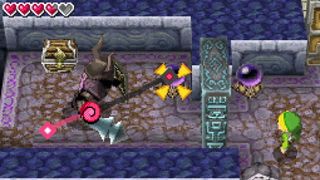
Whenever the game's flaws do get too much, we can recommend quitting to the title screen. It starts in darkness, with a soft chugga-chugga, chugga-chugga as the train heads to the end of a dark tunnel, then both screens fill with light, fading to reveal a lushly coloured, cel-shaded beauty that really shouldn't be possible on the humble DS hardware. The music rises as the camera spins around the train to show us Link grinning in the driver's seat, the spirit of Princess Zelda sitting on the roof of the cabin then taking flight.
It's an opening that confirms the death of the title character before you've even started the game, yet it's one of the most joyous moments in Nintendo history.
Given our reasons for revisiting Spirit Tracks in the first place, we can't help imagining a Breath Of The Wild sequel that builds on all this. The charm, the dungeon design, a cast that can offer more than a brief flutter in the Internet's fickle heart, but most of all multiple protagonists, with a Zelda who once again proves that action and femininity aren't mutually exclusive. It would take nothing short of a miracle – but Nintendo hasn't been short of those in recent years. Who knows, maybe it could even make those train tracks into an enjoyable ride.
This feature first appeared in Edge magazine. For more like it, subscribe to Edge and get the magazine delivered straight to your door or to a digital device.
As well as GamesRadar, Abbie has contributed to PC Gamer, Edge, and several dearly departed games magazines currently enjoying their new lives in Print Heaven. When she’s not boring people to tears with her endless ranting about how Tetris 99 is better than Tetris Effect, she’s losing thousands of hours to roguelike deckbuilders when she should be writing.

